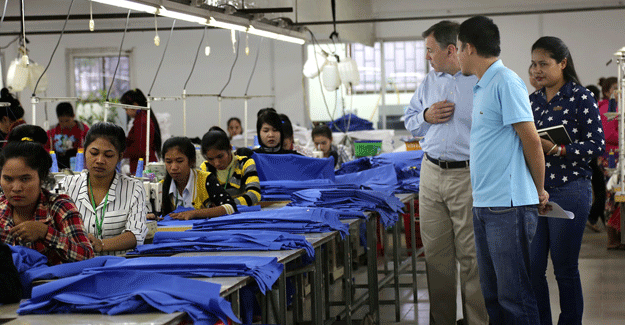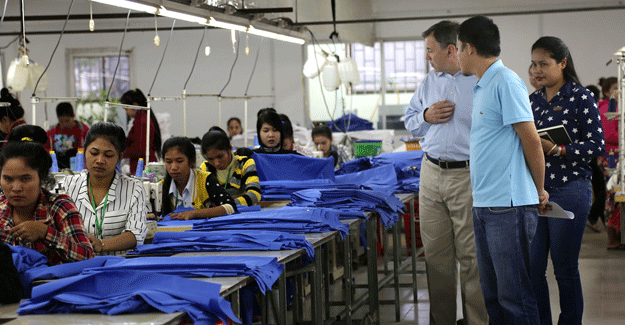
Cambodia's Textile Exporters Face Stiff Challenges Due To Global Price War
While neighboring Vietnam kept blazing a great trail, Cambodia which finds itself engulfed in stiff competition on the textile front witnessed a much slower pace of growth during the first half of the year 2017. The central bank of Cambodia conceded that stiff competition from both Myanmar and Vietnam could have contributed to this deceleration in growth.
To put it in perspective, Cambodia’s garment exports had grown at a rate of 9 percent in the previous year. In the first half of the current year, the growth rate has dipped sharply to 4 percent. The statistics were released by the National Bank of Cambodia in its semi-annual report.
This is a crucial data reflection mainly because alleviation of Cambodia’s poverty rate in the recent years is largely due to the contribution from textile and footwear industries that started booming. In fact, both these industries together engender revenue to the tune of USD 6 billion annually and employ nearly 600,000 people, many of whom are from the impoverished rural background.
According to the National Bank of Cambodia (NBC) semi-annual report “Despite the palpable slowdown, the garment industry proves to be the most robust force to expand the Cambodian economy. The current growth rate can be termed as fair. It’s only the comparison with the previous year growth figures that generates a sense of having a setback.”
The NBC report pointed out that this dip could probably be attributed to strong competition from Vietnam and Myanmar which has resulted in a sharp decline of 2.3 percent exports to the United States. It went on to say, “This however, was not the only contributing factor. We have had a rise in minimum wages for the textile and allied sectors. This has resulted in higher production cost, thereby cutting into our margins.”
As things stand today, Cambodia has a very healthy minimum wage policy of USD 153 in sharp comparison to its competitor Bangladesh’s USD 64. Incidentally, Bangladesh happens to be the second largest exporter of garments albeit a poor second to China. “In wake of these contributing factors, the textile exporters from Cambodia will have to gear up to deliver on the global front,” the NBC report indicated.
The report also cited two other factors that are affecting Cambodia’s trade balance. “Firstly, it has lost its preferential trade access to the countries of the European Union owing to the World Bank effectuating an upgrade of its economy. The World Bank accorded Cambodia the lower middle-income country status. This non-availability of preferential rates barrier will last for the next three years. Secondly, the inflow of Foreign Direct Investment (FDI) into the garment sector has taken a sharp 30 percent dip in the initial quarter of this year. This again compares unfavorably with a 5 percent dip that took place in the year 2016.”

Textile Excellence
If you wish to Subscribe to Textile Excellence Print Edition, kindly fill in the below form and we shall get back to you with details.








